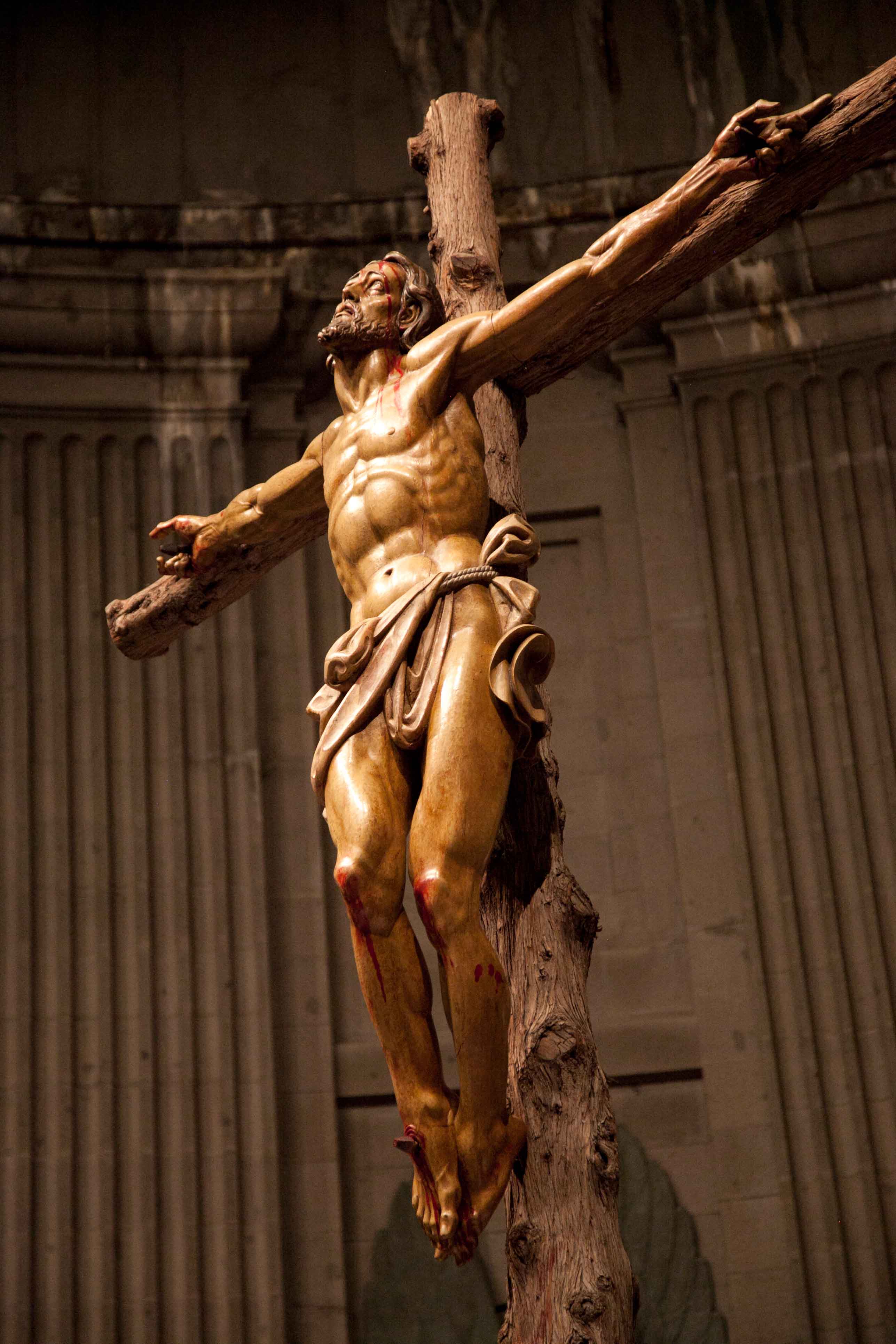It’s been said that you shouldn’t ask questions you don’t want an honest answer to. Did you notice in the Gospel how the curiosity of Peter leads to another revelation he does not want to hear? Judas is going to betray Jesus, sure, but so is Peter.
We have to be prepared to realize truths about ourselves that we don’t want to realize. We are a people marred by sin. We choose sin when righteousness stares us in the face. Time and time again, I’m back in the confessional, confessing the same old sins. That which I do not want to do, I do, and that which I want to do, I do not do. It’s an exhausting, never ending cycle.
In the end, both Judas and Peter betray Jesus. And we will betray Jesus at some point, too. It’s part of human existence.
The difference lies in what happened after Judas and Peter betrayed Jesus. Judas is overcome with guilt, and instead of running back to the Lord for forgiveness, he tragically ends his own life. (This is not to say that those who commit suicide are not forgiven by God! No, God saves by ways known to God alone.) Peter denies Jesus, but instead of despairing of God’s mercy, he runs to the tomb on Easter morning and finds it empty. We see full restoration of relationship later in the Gospel when Jesus asks Peter three times if he loves Him (Jn 21:15-19), making recompense for his three denials (Jn 18:17)
This Holy Week, let us continue to walk with Jesus toward Calvary by recognizing our sinfulness and never despairing of His mercy. Let us avail ourselves of the Sacrament of Reconciliation when we stumble, and have the courage to accompany Him all the way to the Cross. In doing so, we bear witness to the Ultimate Answer: Christ’s saving Death and Resurrection.
Se ha dicho que no debes hacer preguntas si no quieres una respuesta honesta. ¿Notaste en el Evangelio cómo la curiosidad de Pedro lleva a otra revelación que no quiere escuchar? Judas va a traicionar a Jesús, claro, pero Pedro también lo va a negar.
Tenemos que estar preparados para darnos cuenta de verdades sobre nosotros mismos que no queremos darnos cuenta. Somos un pueblo estropeado por el pecado. Elegimos el pecado cuando la justicia nos mira a la cara. Una y otra vez vuelvo al confesionario, confesando los mismos pecados de siempre. Lo que no quiero hacer, lo hago, y lo que quiero hacer, no lo hago. Es un ciclo agotador e interminable.
Al final, tanto Judas como Pedro traicionan a Jesús. Y en algún momento, nosotros también traicionaremos a Jesús. Es parte de la existencia humana.
La diferencia radica en lo que sucedió después de que Judas y Pedro traicionaron a Jesús. Judas se siente abrumado por la culpa y, en lugar de volver corriendo al Señor en busca del perdón, termina trágicamente con su propia vida. (¡Esto no quiere decir que aquellos que se suicidan no sean perdonados por Dios! Dios salva de maneras que sólo Dios conoce.) Pedro niega a Jesús, pero en lugar de desesperarse de la misericordia de Dios, corre hacia la tumba en la mañana de Pascua y lo encuentra vacío. Vemos la restauración completa de la relación más adelante en el Evangelio cuando Jesús le pregunta a Pedro tres veces si lo ama (Jn 21,15-19), recompensando sus tres negaciones (Jn 18,17).
Esta Semana Santa, sigamos caminando con Jesús hacia el Calvario reconociendo nuestra pecaminosidad y nunca desesperándonos de Su misericordia. Aprovechemos el Sacramento de la Reconciliación cuando tropecemos, y tengamos la valentía de acompañarlo hasta la Cruz. Al hacerlo, damos testimonio de la respuesta definitiva: la muerte y la resurrección salvadoras de Cristo.
 Mary Thissen is a St. Louis native living in East Central Illinois with her husband and children. She is blessed with twin boys Earthside and four children now living in Heaven. When she is not working as a healthcare data analyst or caring for her boys, she enjoys studying and writing about the Catholic faith and ministering to women who are suffering through miscarriage or infertility. You can connect with Mary on Instagram @waitingonmiracles.
Mary Thissen is a St. Louis native living in East Central Illinois with her husband and children. She is blessed with twin boys Earthside and four children now living in Heaven. When she is not working as a healthcare data analyst or caring for her boys, she enjoys studying and writing about the Catholic faith and ministering to women who are suffering through miscarriage or infertility. You can connect with Mary on Instagram @waitingonmiracles.
Feature Image Credit: brenkee, pixabay.com/photos/man-pray-sit-sitting-praying-1350599/


 Tami Urcia grew up in Western Michigan, a middle child in a large Catholic family. She spent early young adulthood as a missionary in Mexico, studying theology and philosophy, then worked and traveled extensively before finishing her Bachelor’s Degree in Western Kentucky. She loves tackling projects, finding fun ways to keep her little ones occupied, quiet conversation with the hubby and finding unique ways to love. She works full time, is a guest blogger on
Tami Urcia grew up in Western Michigan, a middle child in a large Catholic family. She spent early young adulthood as a missionary in Mexico, studying theology and philosophy, then worked and traveled extensively before finishing her Bachelor’s Degree in Western Kentucky. She loves tackling projects, finding fun ways to keep her little ones occupied, quiet conversation with the hubby and finding unique ways to love. She works full time, is a guest blogger on 
 Kathryn Mulderink, MA, is married to Robert, Station Manager for Holy Family Radio. Together they have seven children (including Father Rob), and seven grandchildren. She is President of the local community of Secular Discalced Carmelites and has published five books and many articles. Over the last 30 years, she has worked as a teacher, headmistress, catechist, Pastoral Associate, and DRE, and as a writer and voice talent for Catholic Radio. Currently, she serves the Church by writing and speaking, and by collaborating with various parishes and to lead others to encounter Christ and engage their faith. Her website is
Kathryn Mulderink, MA, is married to Robert, Station Manager for Holy Family Radio. Together they have seven children (including Father Rob), and seven grandchildren. She is President of the local community of Secular Discalced Carmelites and has published five books and many articles. Over the last 30 years, she has worked as a teacher, headmistress, catechist, Pastoral Associate, and DRE, and as a writer and voice talent for Catholic Radio. Currently, she serves the Church by writing and speaking, and by collaborating with various parishes and to lead others to encounter Christ and engage their faith. Her website is 